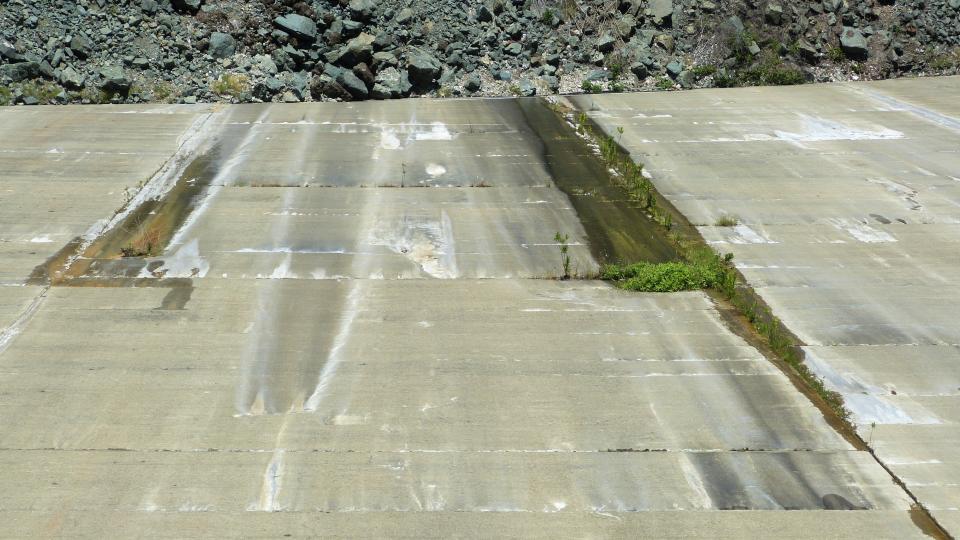With a fuller Lake Shasta, more water is seeping from the front of Shasta Dam
With Lake Shasta nearly full this spring, more water has begun to seep out of the face of Shasta Dam, on the side opposite the lake.
Water has been trickling down the downstream face of the dam in several spots, with vegetation growing in places where the water leaks out.
Even though the massive concrete structure is 602-feet-tall and 543-feet-wide at the base, there are still ways for the water to get through from the lake side to the opposite side, said Don Bader, area manager for the U.S. Bureau of Reclamation.
The 6.2 million yards of construction material may look from the outside like it is composed solely of large blocks of concrete. But the dam is not solid all the way through. There are passageways, walkways, pipes and tunnels inside, Bader said. Because the lake is nearly full this year, the seepage is greater, he said.
The water coming through is due to leaky seals on the drum gates that control how much water flows down the spillway near the center of the structure, Bader said. The gates are the same ones originally installed on the dam in the early 1940s, he said.
"I don't want to be quoted saying it's nothing to be concerned about, but it is normal seepage," Bader said. "We do have a maintenance program to rehab it as we go, but they're (the gate seals) not our top priority. That leakage is minimal in the big scheme of things."
The seepage was not as noticeable during the past two years, when the drought dropped the level of Lake Shasta to near record-low levels. But this year, with the elevation of the lake to near capacity, the water pressure pushing on the drum gates has caused more leakage, Bader said.
The seepage appears to be oozing from the grouted seams between the concrete on the face of the structure. On earthen-fill dams, leakage is more of a concern, but not with concrete dams like Shasta, he said.
There was concern about possible seepage on the earthen-fill Oroville Dam following a failure of that dam's spillway in 2017. In February of that year, large chunks of the concrete spillway gave out, forcing a precautionary evacuation of about 188,000 residents living downstream.

No damage was caused beyond the spillway collapse, but residents and officials, already wary of the condition of the dam, were concerned about a green area they noticed on the face of the dam, with vegetation growth possibly caused by seepage.
The California Department of Water Resources had the dam inspected and a team of investigators determined the vegetation growth was seasonal. The agency report concluded there was not increased seepage through the dam.
Instead, vegetation had for many years grown on the face of the dam, the report said. An area of the dam greened up during the rainy season and then dried out and turned yellow and brown in the summer.
There is a patch of vegetation growing on the face of Shasta Dam in an area where water seeps out from the seams in the concrete.
Trees and other vegetation have long grown on the side of the dam. Bader said that about 12 years ago, climbers rappelled down the face of the dam on ropes and cut down a tree, which was about 10 feet tall.
There are monitors inside Shasta Dam that keep track of the amount of water getting into the structure. Bader said the amount of seepage recorded is not unusual or a concern.
Reporter Damon Arthur welcomes story tips at 530-338-8834, by email at damon.arthur@redding.com and on Twitter at @damonarthur_RS. Help local journalism thrive by subscribing today!
This article originally appeared on Redding Record Searchlight: With a fuller Lake Shasta, more water seeping from front of Shasta Dam

